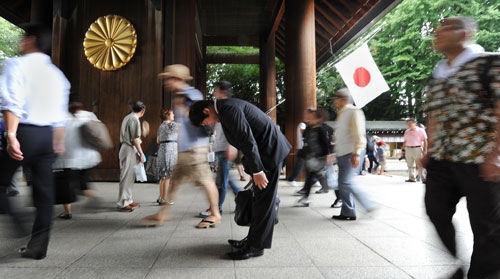Though the rebuilt Hiroshima in Japan offers the usual entertainment to tourists, it is a visit to its legacy of the atomic bomb that The Goan found the most gripping

If ever an example was needed of human resilience,one needs to look no further than Hiroshima in Japan. It was a chance visitthat had brought me here at the beginning of this year and though at firstglance Hiroshima looks like just any other neon-lit city of Japan, a visit tothe monuments that stand as tall reminders of the tragic past brings back allthat you have read in history tomes and you invariably shudder at the thoughtof what must have happened to the city’s residents when an atomic bomb wasdropped on it on August 6, 1945. Reportedly, it killed 70,000 people at onestroke and left an equal number to suffer from the after-effects of theradiation.
But now, 67 years later, Hiroshima stands like themythical phoenix rising from its ashes. With just two days to spare, I was inno mood for the usual sounds and sights of what was offered by way ofentertainment. Rather, I saw this visit as perhaps my only opportunity toreally absorb the city’s historical significance. As such, my first stop wasthe Hiroshima Peace Memorial on a bright, clear morning. Commonly called theA-Bomb Dome, it is now part of the Hiroshima Peace Memorial Park and wasdesignated a UNESCO World Heritage Site in 1996. It’s a rather forlorn lookingmonument and the hordes of tourists clicking pictures in front of it do nothelp evoke any deep feelings. However, it does make one wonder at the futilityof war, more so when you think of the thousands of people who lived maimedlives after the explosion.
The past in Hiroshima is also represented by the HiroshimaCastle which is over five stories tall and is surrounded by a moat. Sometimesreferred to as ‘Carp Castle’, it was built in 1589 by the feudal lord MoriTerumoto. Unlike many castles during the Meiji restoration, it survived. However,like the rest of the city, it was destroyed in 1945 and then rebuilt after thewar with amazing attention to authenticity. What I found the most touching wasthe Children’s Peace Monument, close to the A-Bomb Dome. Here you find the statueof a girl with outstretched arms and a folded paper crane rising above her. Thestatue is based on the true story of a young girl who died from radiation fromthe bomb. She believed that if she folded 1,000 paper cranes, she would becured. Today, the monument is perennially draped in thousands of paper cranesfolded by school children across Japan.
There’s more of history for anyone looking for it.That’s what brought me to the Hiroshima Peace Memorial Museum which is splitinto the east and the west wings with the former being more educational. Aguide, speaking fluent English, explained to me the decision to drop the bomband verbally painted a sorrowful picture of the lives of Hiroshima’s citizensduring World War II and after the bombing. In the west wing were exhibits of clothing,watches and other personal effects worn by victims of the bomb as well asdetails about health effects suffered by the victims. “The purpose of theseexhibits is to drive home the need for a war-free world,” the guide said.
Though I did not have the time to explore anythingelse, there are other attractions and landmarks such as the Shukkeien Gardens, theMazda Museum and the nearby Miyajima which is reached by ferry from Hiroshima.It has been considered a holy place for most of Japanese history. In the past,women were not allowed on the island and old people were shipped elsewhere todie, so that the ritual purity of the site would not be spoiled. The island ismost famous for its floating gate which appears to float on the sea during hightide. But what I did indulge in before leaving the city was a bit of atraditional shopping experience at the Ai Yu Ichiba Market located next to the station.Incidentally, you won’t find here any tourist souvenirs or globally franchisedsupermarkets but just old style Japanese grocery stores, seed sellers andsweets stores. Enchanting, to say the least!